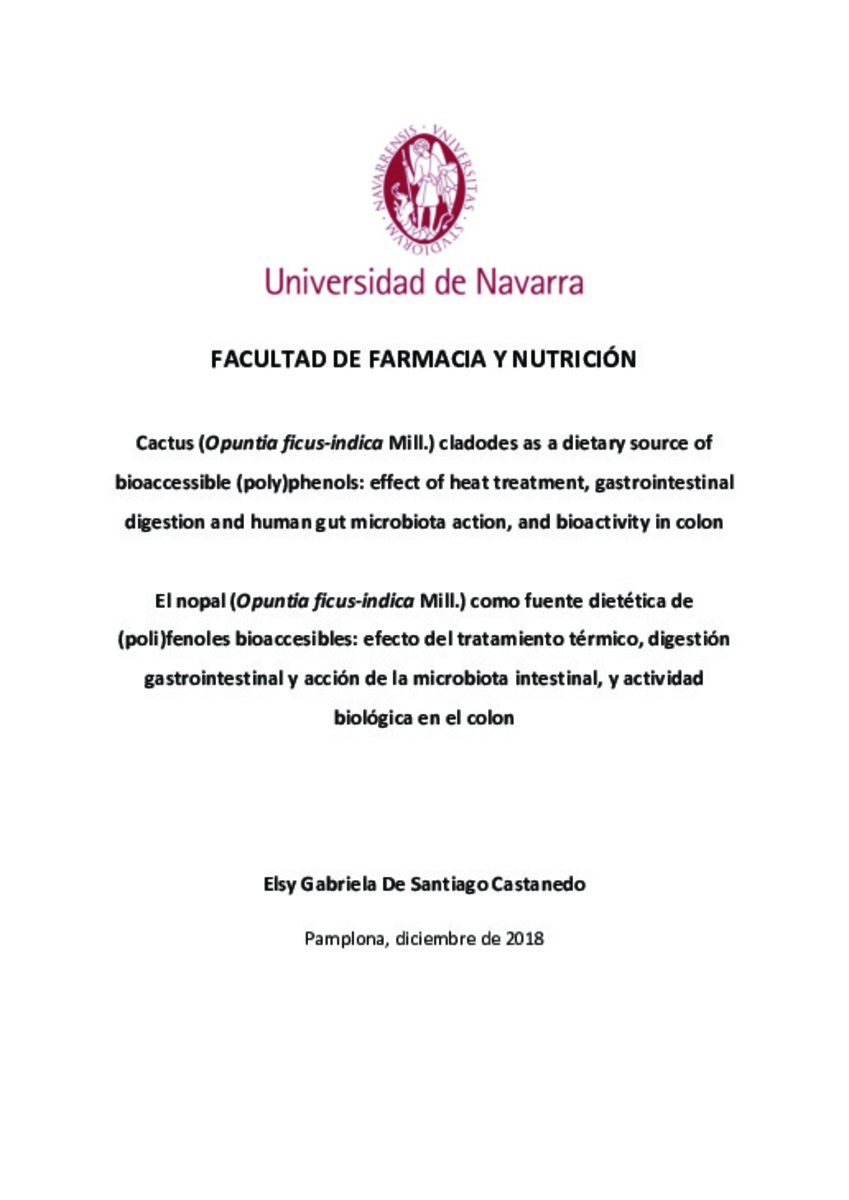Cactus cladodes (Opuntia ficus-indica) as a dietary source of bioaccessible (poly)phenols: effect of heat treatment, gastrointestinal digestion and human gut microbiota action, and bioactivity in colon
Palabras clave :
Digestión
Antioxidantes de los alimentos
Materias Investigacion::Ciencias de la Salud::Nutrición y dietética
Fecha de publicación :
6-feb-2019
Fecha de la defensa:
13-dic-2018
Cita:
DE SANTIAGO CASTANEDO, Elsy. "Cactus cladodes (Opuntia ficus-indica) as a dietary source of bioaccessible (poly)phenols: effect of heat treatment, gastrointestinal digestion and human gut microbiota action, and bioactivity in colon". Peña, M. P. y Cid, M. C. (dirs.). Tesis doctoral. Universidad de Navarra, 2018.
Aparece en las colecciones:
Estadísticas e impacto
0 citas en

0 citas en

Los ítems de Dadun están protegidos por copyright, con todos los derechos reservados, a menos que se indique lo contrario.







